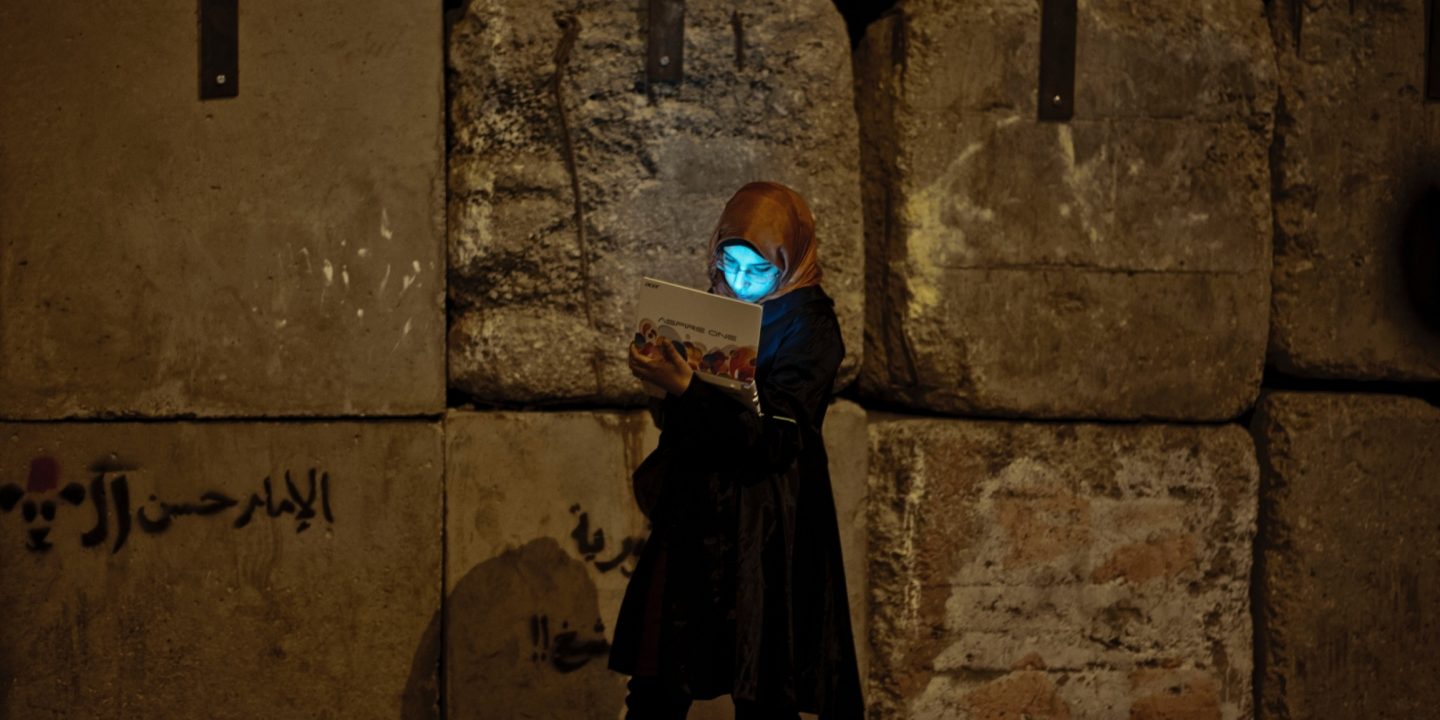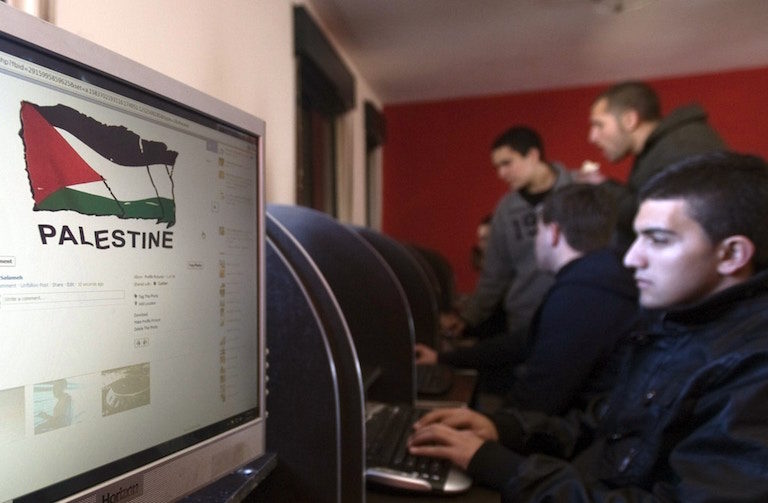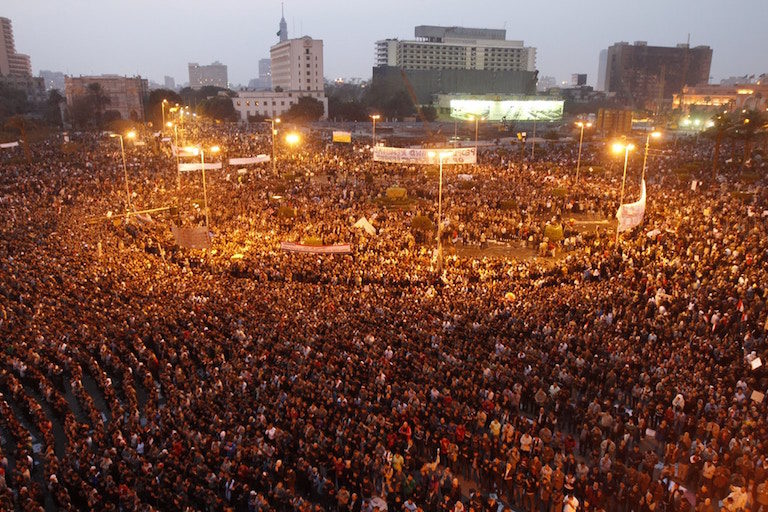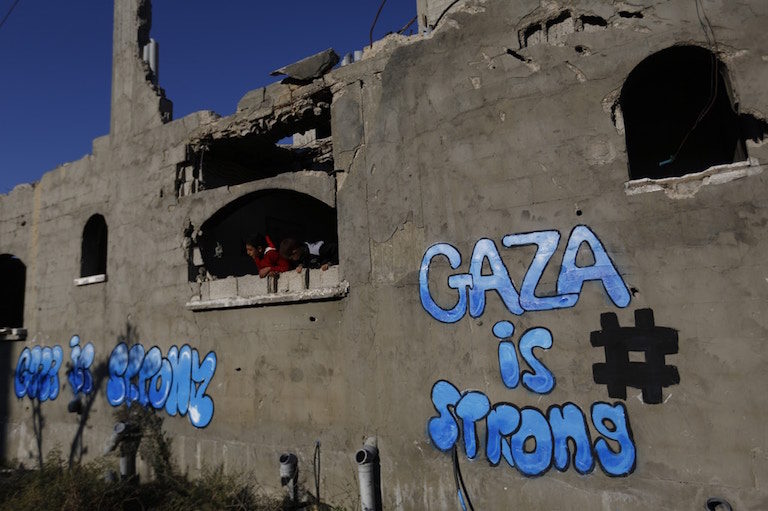
McLuhan's prediction may have felt outlandish in his own era, but it seems very close to our present-day reality. Decades ago, the barriers to entry for broadcasting and publishing were so high that only established institutions could meaningfully engage in news dissemination. But over the past 10 to 15 years, ordinary individuals have been radically empowered with the ability to record, publish, and broadcast information to millions around the world, at minimal cost.
The revolutionary impact of this new information environment - where any individual or network of individuals can create their own mini-CNN - is transforming our societies. The loss of gatekeeping authority held by legacy media institutions has opened up opportunities for long-suppressed groups to have their narratives heard: Palestinians, African-American activists, feminists, environmentalists, and dissident groups working in authoritarian societies can all find ways, not always without some trouble, to be heard.
This new media landscape, though, also created a world susceptible to unprecedented levels of propaganda, conspiracy, and disinformation. The epistemological chaos created by the global explosion of "news," some of it of questionable veracity, has already led to serious disruptions in both politics and daily life. But there is another area of life that might be most seriously impacted by the changing information landscape: armed conflict.
Propaganda and information warfare was once the purview of nation-states, militaries, and intelligence services. Today, even ordinary people have become important players in these campaigns. Battles over narratives and information have become an integral part of modern war and politics; the role played by bloggers, activists, and "citizen journalists" in shaping narratives has proven vital.
The examples are rapidly piling up in the second decade of the 21st century. Citizen journalists and accidental activists helped change the course of history during uprisings in Egypt, Bahrain, Tunisia, Syria, and Libya - as well as during Israel's 2014 war against Palestinians in the occupied Gaza Strip. Very quickly, people who were once considered to be victims of war and great-power politics have become empowered as political actors. During Israel's 2014 bombardment of Gaza and the 2016 Russian aerial bombardment of the rebel-held Syrian city of Aleppo, young women and children came to international attention for their updates from war zones, helping wage battles to shape global public opinion.
Distinct from traditional information operations waged by states, the narratives of ordinary people and activists benefit from a greater sense of personal authenticity and emotional connection. This currency has always been difficult for institutions to capture, but comes naturally to individuals and activists. Social media's ability to bypass traditional media gatekeepers also blew apart the biggest barriers to marginalized voices being heard: political and corporate control over publishing.
"Powerful institutions still exist and remain very powerful, but there is another currency that has emerged because of social media and the internet, which you might call authenticity or emotional appeal," says Matt Sienkiewicz, an assistant professor of communication and international studies at Boston College and the author of "The Other Air Force: U.S. Efforts to Reshape Middle Eastern Media Since 9/11."
"Everyone focuses on the producers of media in shaping public opinion, but it's really at the distribution level of information where the bottleneck has traditionally been," adds Sienkiewicz. "This is what social media has fundamentally changed. There is a lot of focus on the ugly side, with respect to viral conspiracies and misinformation - but there is also reason to be optimistic, because many stories that would've been ignored before are now being heard."
The emergence of online citizen journalism has also, however, increasingly blurred the distinction between participants and non-participants in conflict, as well as activists and journalists. For those lacking decent media education, discerning truth from falsehood is becoming an increasingly Sisyphean task.
Picking through the pieces of the past few years, a few writers have begun to examine the ways that social media is shaping our understanding and experience of modern conflict and politics. "War in 140 Characters," by the journalist and author David Patrikarakos, and "Digital World War," by Haroon Ullah, an author and former U.S. State Department official, both represent early attempts to understand the gravity of our current information crisis.
With the lines of armed conflicts' central distinctions already being blurred - between peacetime and war, combatant and civilian - social media has the potential to draw the entire world into a gray zone where the lines between participants and non-participants in conflict is unclear. Whereas the last World War was a clearly defined clash of nation-states with uniformed armies, our new era of tech-driven information warfare holds the potential to become so amorphous and all-encompassing that it could to seep into every aspect of society, transforming the experience of both politics and war in the process.

As bombs rained down on Gaza neighborhoods, following a pattern that included the killing and maiming many ordinary people, Palestinians rushed to social media to share their own narrative of the war. Young men and women living in the Strip shared photos of apparent atrocities committed against civilians, alongside often emotional updates about their own experiences trying to survive the Israeli military onslaught. In previous conflicts most of these voices would never have been heard. Broadcast directly onto the global public spheres of Twitter and Facebook, however, accounts of Palestinian suffering and resistance became impossible for the world to ignore.
Writing in Middle East Eye on social media's role in the conflict, Yousef al-Helou reflected:
Even when the power was out, citizen journalists managed to post pictures of dead bodies, destroyed neighborhoods and injured people to the outside world. Photography has always been a powerful force, but the Gaza conflict was one of the first wars to be photographed mainly by amateurs and social media platforms, allowing those images to spread far and wide at the click of a button, helping the people of Gaza win hearts and minds, and subsequently causing unprecedented outrage against Israel. In demonstrations around the world, such photos were enlarged and carried by demonstrators, demanding that their respective governments take action to halt Israel's onslaught.As the public outcry over the war grew, even establishment media outlets in the U.S. were forced to take note of the Palestinian experience of the conflict. In response to the growing public relations disaster caused by images of dead Gazan civilians, Israeli Prime Minister Benjamin Netanyahu accused the Hamas government in the territory of using "telegenically dead Palestinians for their cause" - a statement that did little to quell rising international outrage over the civilian deaths.
In military terms, there was no real parity between the two sides. By the time the conflict ended, more than 2,100 Palestinians had been killed, compared with just 66 Israelis. The physical infrastructure of the besieged territory suffered devastating damages, with Israeli attacks crippling water and power sources to Gaza residents. Despite their advantage in brute strength, the lopsided death toll, and destruction of only one party's territory, it's not clear that the Israelis won the conflict. In the battle over the narrative of the war - vitally important in a conflict whose power dynamics are strongly impacted by outside actors - the Palestinians managed to win significant traction for their cause.
Instead of another case of the Israeli military attacking an amorphous group of Islamist terrorists, a counter-narrative of the conflict spread globally. In this version of events, Israel was not a democratic state waging a war of self-defense against terrorists, but a U.S.-backed military behemoth pummeling the people of an impoverished territory. The death toll seemingly proved to the world that disproportionate force was being inflicted on a weak and isolated territory.
"During Protective Edge" - the name the Israeli military gave to the campaign - "the people who suffered most were Palestinians, under siege from Israel's superior military force," Patrikarikos writes in his book. "This is the democratization of the wartime narrative in action, and it benefitted only one side: the Palestinians."
During the war, no one was more emblematic of the changing power dynamics than Farah Baker, a 16-year old Palestinian girl who came to international attention for her social media updates about life in Gaza. Baker was not tied to any political group and her perspective on the war was a personal one. Yet her social media presence catapulted her to global attention and told the Palestinian story to the world in a way that resonated emotionally. It also empowered Baker as a political actor, something that she had never expected and that could never have occurred in any previous conflict.
Normally, a young teenage girl living under aerial bombardment would have been considered a bystander, at best, or a victim, at worst. But thanks to her Twitter feed, where she shared both her fears as well as her attempts to maintain normal life amid the war, Farah became an important part of the Palestinian effort to sway global opinion on the conflict.
"At only sixteen, Farah understood, even if only instinctively, the importance of social media in wartime, especially to a perpetual underdog like the Palestinians," Patrikarikos wrote. "She understood the power that it gave to a single individual and to networks of individuals, power that previously would have been impossible."
In Gaza, like in Syria and Ukraine, there have been instances of alleged faked suffering and atrocity spread for propaganda purposes. Here, too, social media has changed the way the conflict is perceived. Through social media's ability to give accounts from multiple separate sources on the ground to verify information and share evidence, outside observers can better evaluate the credibility of reports from the ground.
During the Gaza conflict, the Israeli Defense Forces attempted to rebut the onslaught of Palestinian citizen journalism with their own information war, disseminating infographics and videos intended to show the Israeli side of the story. Ultimately, the Israelis were at a disadvantage. The personal authenticity of Gaza's tech-savvy young people resonated more naturally with observing audiences than the official statements and flashy messaging released by Israeli military officials, messages that were indelibly stamped with the alienating face of a bureaucracy.
The impact of this disparity was notable. In a column in Foreign Policy following the war, entitled "On Israel's Defeat in Gaza," international relations scholar David Rothkopf reflected on the global impact of the scenes of mayhem that had ensued in Gaza, including images of young children being killed on a beach by Israeli military forces. "There is no Iron Dome" - a sophisticated and expensive Israeli missile defense system - "that can undo the images of suffering and destruction burned into our memories or justify away the damage to Israel's legitimacy that comes from such wanton slaughter," Rothkopf wrote.
While Barack Obama's presidential administration stood by Israel during the conflict, calling for restraint from both sides, two years later, as he prepared to leave office, the U.S. took the significant step of distancing itself from Israel at the United Nations by allowing an anti-settlement resolution to pass - a rare instance of the U.S. acceding to public censure of Israeli actions. While far from a sea-change in America's stance on the conflict, the move reflected growing dissatisfaction with Israeli actions in the United States, which, though not shared by the Trump administration, continue to be echoed by high-ranking former officials.
In her own small way, with her tweets and updates during the war, Farah Baker had played a role in shifting the narrative and forcing the world to grapple with the Palestinian narrative of the conflict.
"I don't have the ability to carry a weapon and I would never kill anyone, so my only weapon was to broadcast the truth and to let people know what was happening here," Baker told Patrikarakos in an interview at her Gaza home. "I was more effective than I ever imagined, because of the amount of followers I got and because so many people told me I had changed their minds [about the war] and opened their eyes."

The grim years that followed the initial uprisings have mostly dispelled this narrative. While liberal activists were adept at organizing online, so were political Islamists and jihadist groups. These groups were better funded, better organized, and already had experience operating clandestinely -using the latest technologies for propaganda, recruitment, and networking. Over time, it would be Islamist groups like the Muslim Brotherhood, as well as jihadists, that moved into the vanguard of the revolutions, pushing aside the liberal activists who had initially captured the world's imagination.
"Digital World War" is an analysis of how opposition movements, and Islamists in particular, have used social media as a tool of waging war against established governments. Haroon Ullah is a former State Department official and expert on Pakistan's Jamaat-e-Islaami movement. Unlike Patrikarikos' book, "Digital World War" is a staid academic analysis of how social media and other new technologies are altering the dynamics between central governments and opposition movements, both Islamist and liberal. But Ullah's work also addresses the crux of how social media is upending the traditional power dynamics governing war and politics.
Perhaps the most destabilizing aspect of new technologies is the way that they have potentially supercharged the speed of political change. Youth-led revolutions in Egypt and Tunisia began and ended within a matter of weeks, toppling governments that had been in place for decades. Although both countries had suffered from long-standing structural problems, the sparks for both uprisings were lit over individual outrages - corruption and police brutality - that were spread and rapidly popularized over social media. Though many bystanders later joined the protests for other reasons, the speed and scale with which people initially organized would have been impossible in an era before cellphones and the internet.
The very speed of these movements, however, made it hard to build a sustainable order out of the collapse of the old regimes. While it was true that online mobilization played a role in toppling both Egyptian strongman Hosni Mubarak and Tunisian dictator Zine El Abidine Ben Ali, it also allowed little time for real leaders to emerge or for political platforms to be agreed upon. While the people who went into the streets were united in their indignation over injustice and their opposition to the old order, they had very different ideas about the future of their countries. When the regimes collapsed, the only parties established enough to take advantage were those aligned with the long-suppressed Muslim Brotherhood.
"It was not a matter of Islam being some defining feature of Tunisian identity - despite the Islamists claims," Ullah writes, regarding the Tunisian revolution and the subsequent election of the liberal Islamist party Ennahda, "Rather, the victory was the natural outcome of the inevitable schism between the nature of the revolution and the readiness of the Islamists for power."
Social media is not the first information technology that has had helped galvanize revolutionary change. Radio, telegraph, and even the printing press all helped precipitate major socio-political transformations in the past, the latter famously helping enable the Christian Reformation.
More recently, the groundwork for the 1979 Iranian Revolution was laid with the help of a relatively new technology: Popular speeches by the revolution's leader, Ayatollah Ruhollah Khomeini, were recorded and copied onto cassette tapes, which were then rapidly replicated and distributed. Unlike social media movements that can close the cycle between outrage and protest to a matter of days, however, it took Khomeini years of painstaking media work to help build mass support for an opposition movement in Iran. By the time the that Iranians finally went into the streets against the Shah - motivated by many different ideological currents - Khomeini was a well-known and popular spiritual leader within the opposition. When the monarchy fell, he was well placed to marginalize his ideological rivals and consolidate clerical power over the country.
The difference between Iran's uprising and the leaderless revolutions of today is vast and points to one of the major pitfalls of internet activism. Online organizing and propaganda can be legitimately useful for destabilizing regimes, especially rigidly authoritarian ones that need to strictly control the flow of information. But because of the speed with which it can precipitate change, its less useful for building up the networks and organizations needed to fill the gap created when old governments actually fall.
"When there is no single leader to focus a political movement - Khomeini, Mandela, Lenin - there may be more and faster revolutions than previously, but there are fewer revolutionary outcomes and scenarios," Ullah writes. "So when a dictatorship - by definition and decree the sole and strongest institution in a country - is deposed by insurrections like the Arab Spring, what comes into the place of the power vacuum is not dictated by those who have created it."

In recent years, transnational militant groups, civil society activists, and hackers have all been able to inflict defeats on lumbering state adversaries, in part by leveraging the speed of connectivity and communication afforded by the internet. "The networks came to push, to prod, and to confront. They came to solve the supranational problems of injustice, inequity and environmental degradation that a nation-based capitalist system could never, in their view, deal with adequately," wrote Arquilla. "In short, the networks came to change things, and they came not in peace but with swords."
The 21st century has seen the rise of "gray-zone conflicts," where armed force, politics, and media increasingly blur together, such as the 2014 war between Israel and the Palestinians. Gray-zone conflicts are seldom interstate wars, but are more likely to be civil uprisings, conflicts between states and militant groups, and domestic insurgences. As scholars David Barno and Nora Bensahel have written, these conflicts "involve some aggression or use of force, but in many ways their defining characteristic is ambiguity - about the ultimate objectives, the participants, whether international treaties and norms have been violated, and the role that military forces should play in response."
It is within this ambiguous environment that information warfare waged online by activist groups and individuals is playing a critical, at times even definitive role. As the dominance over information flows held by nation-states evaporates, their ability to control the trajectory of conflicts by managing international opinion and maintaining domestic authority is eroding as well.
The threat of this change, as well as the political impact of viral misinformation, has led to calls from some corners for greater regulation and involvement by tech companies in putting curbs on online speech. Although improved media education for the general public is likely necessary, any nostalgia for an earlier era where information was controlled by a few hegemonic media institutions is wildly misplaced.
"If we allow the problems that exist with social media and new technologies to be used as a pretext to roll things back, it would be the ultimate crime," says Sienkiewicz. "The old media environment in which billions of people had little access to getting their stories told - in which entire classes of people were effectively deemed by media institutions as not worth reporting on - is not something that we should want to return to. We should address the problems that exist with new media, not try to turn back the clock and deem this all a failed experiment."
For better or worse, thanks to social media and smartphones, a version of the "guerilla world war" predicted by Marshall McLuhan - a war over information drawing in states, militaries, activists, and ordinary people in equal measure - has come into existence. The consequences are likely to transform politics, conflict, and daily life for generations to come. McLuhan himself suggested that surviving in this new world would be possible only through a conscious embrace of change, rather than a retreat into reactionary policies.
"The new technological environments generate the most pain among those least prepared to alter their old value structures," he said, in a 1969 interview with Playboy Magazine. "When an individual or social group feels that its whole identity is jeopardized by social or psychic change, its natural reaction is to lash out in defensive fury."
"But for all their lamentations, the revolution has already taken place."



Reader Comments
to our Newsletter